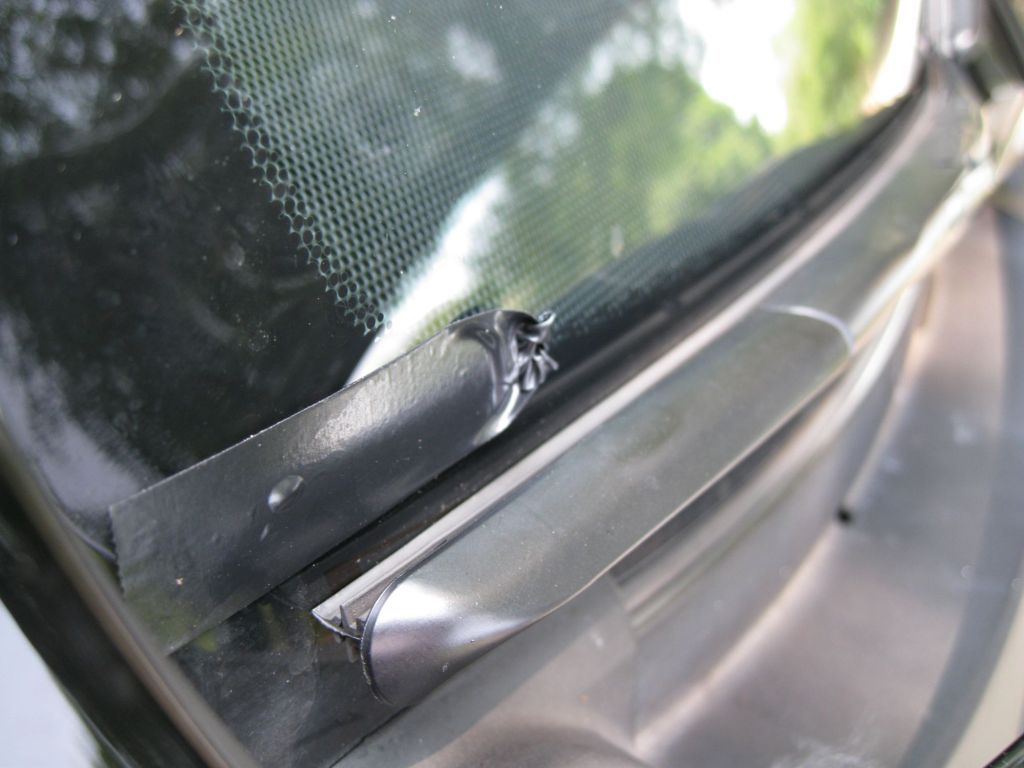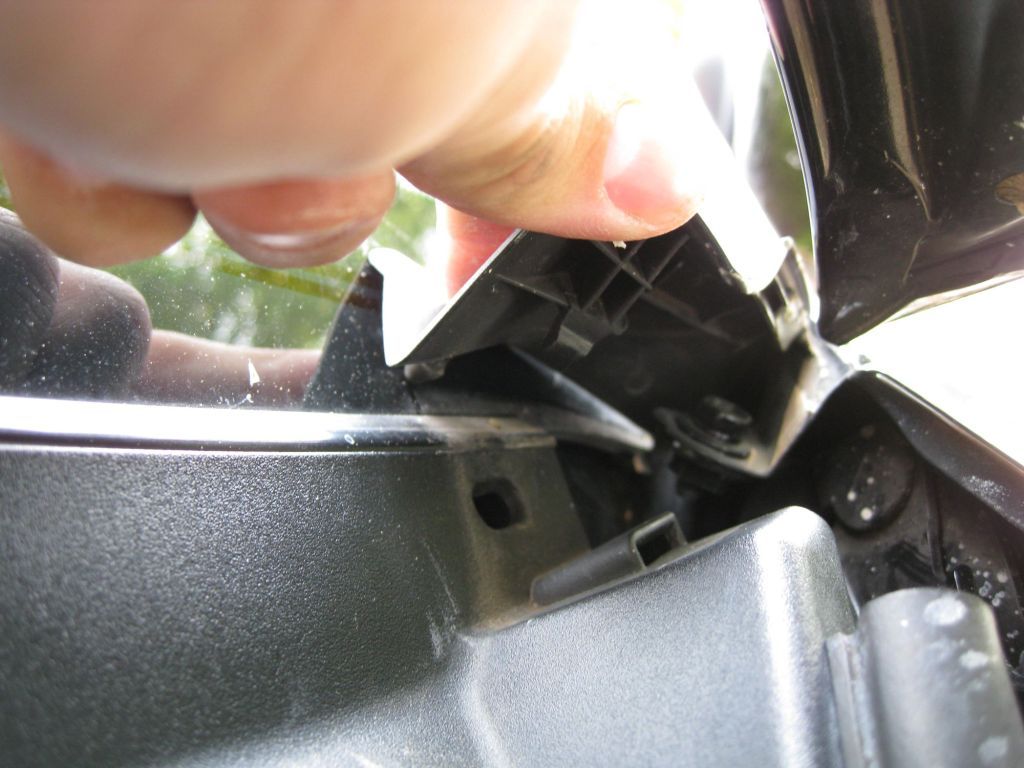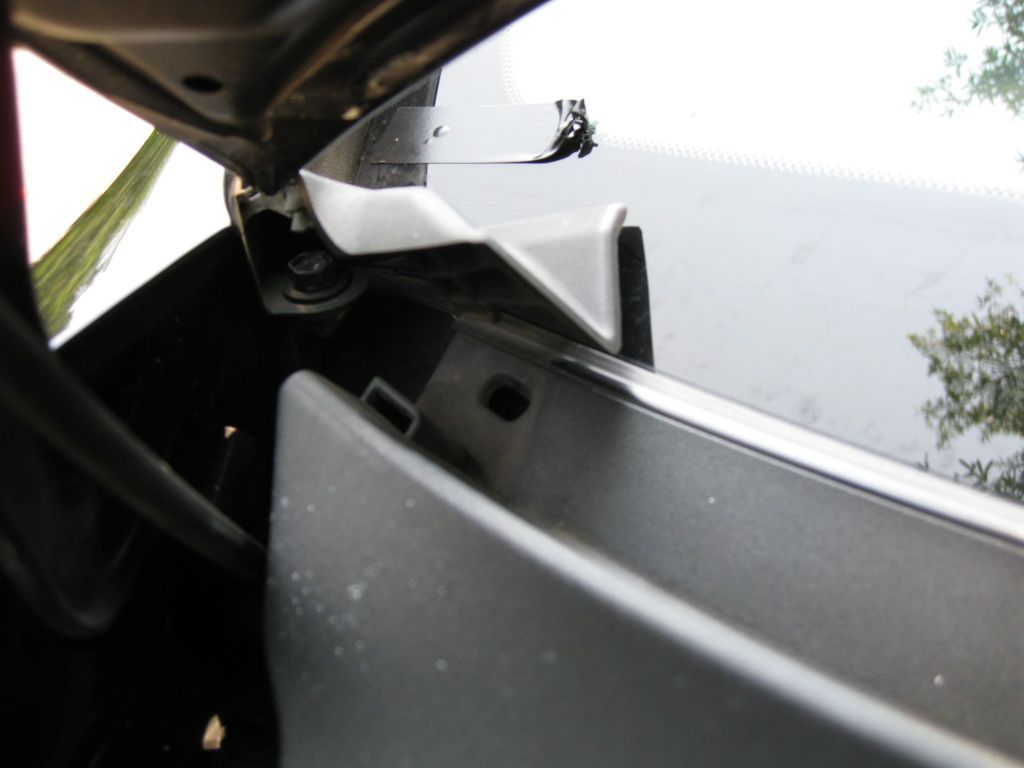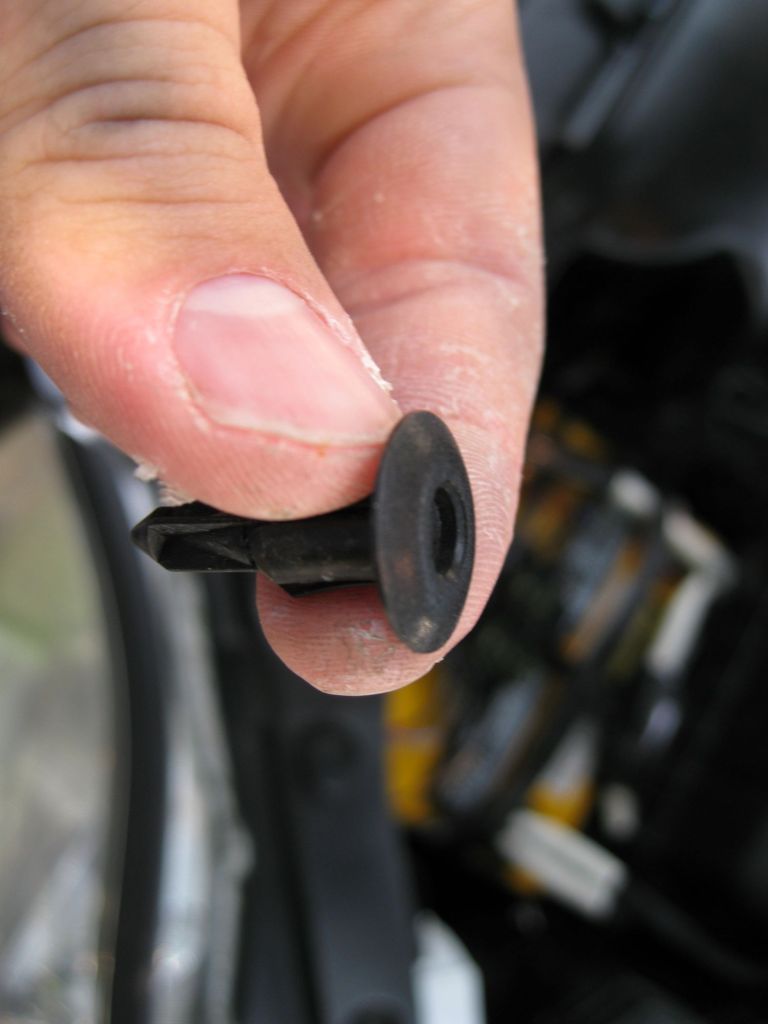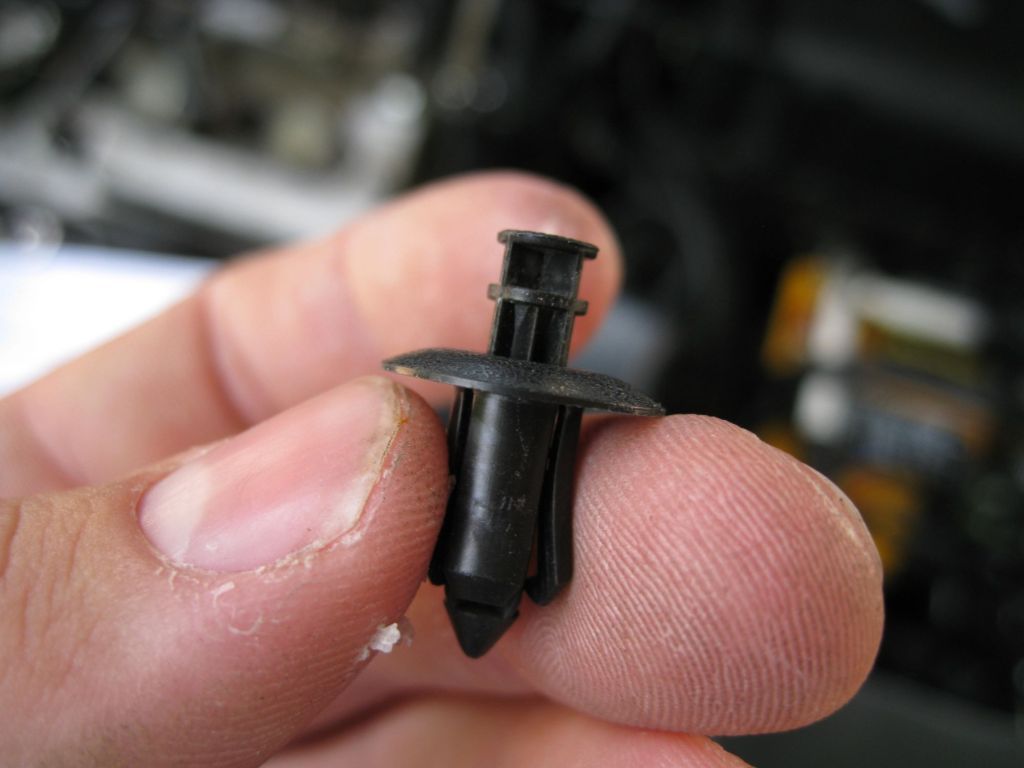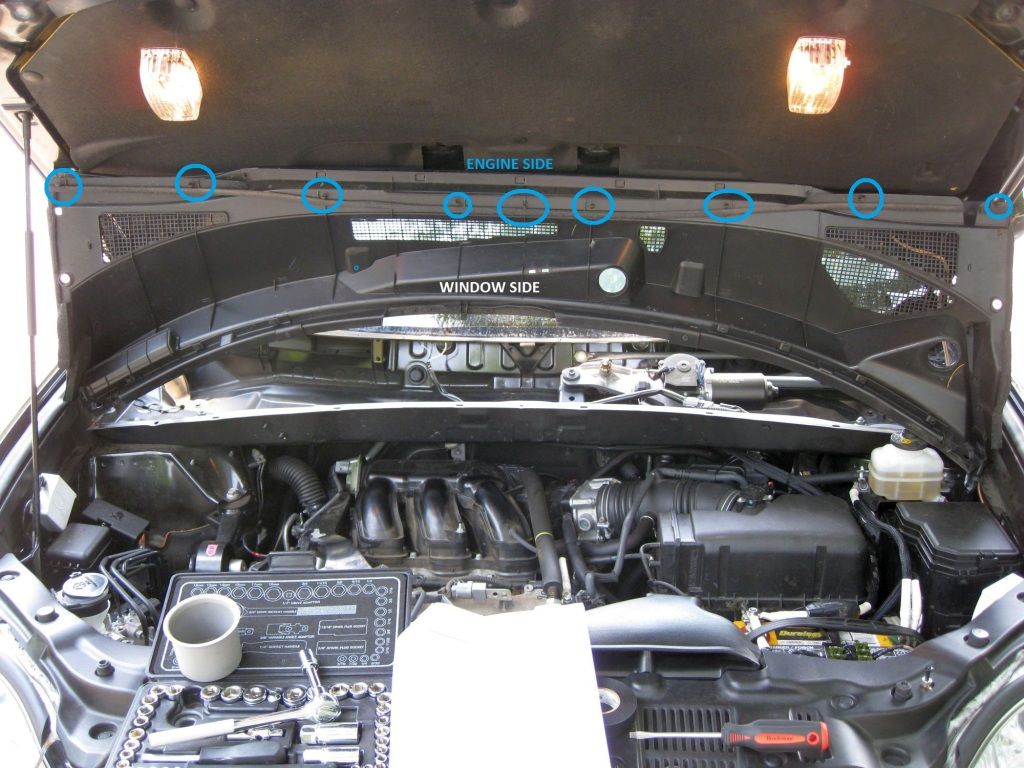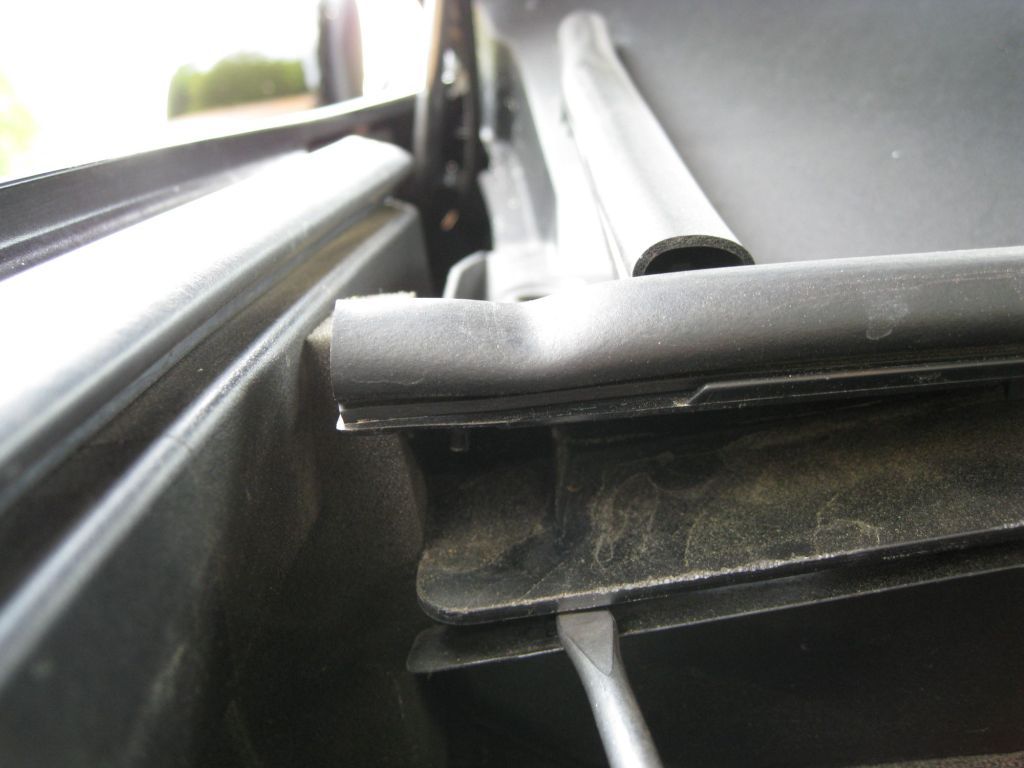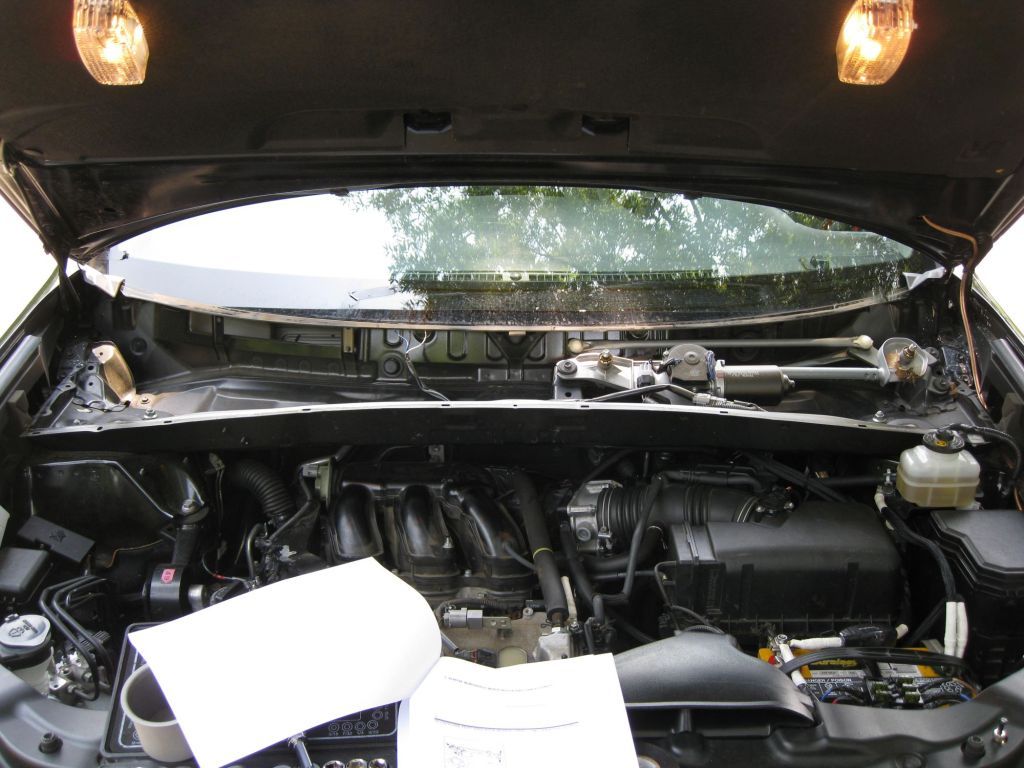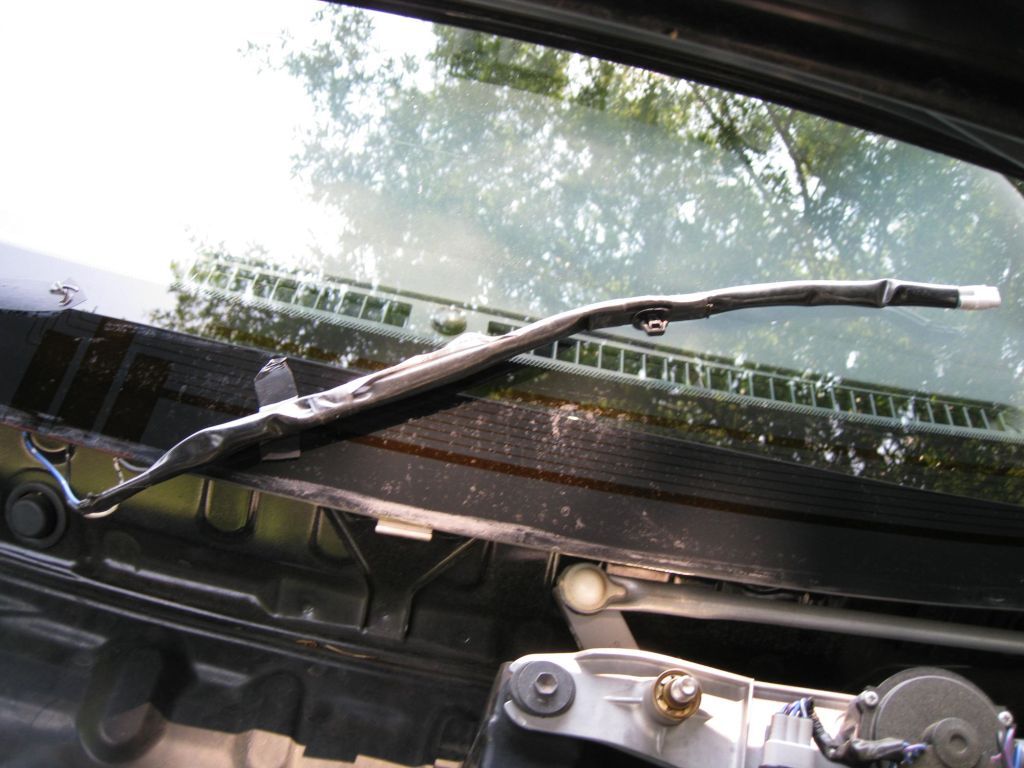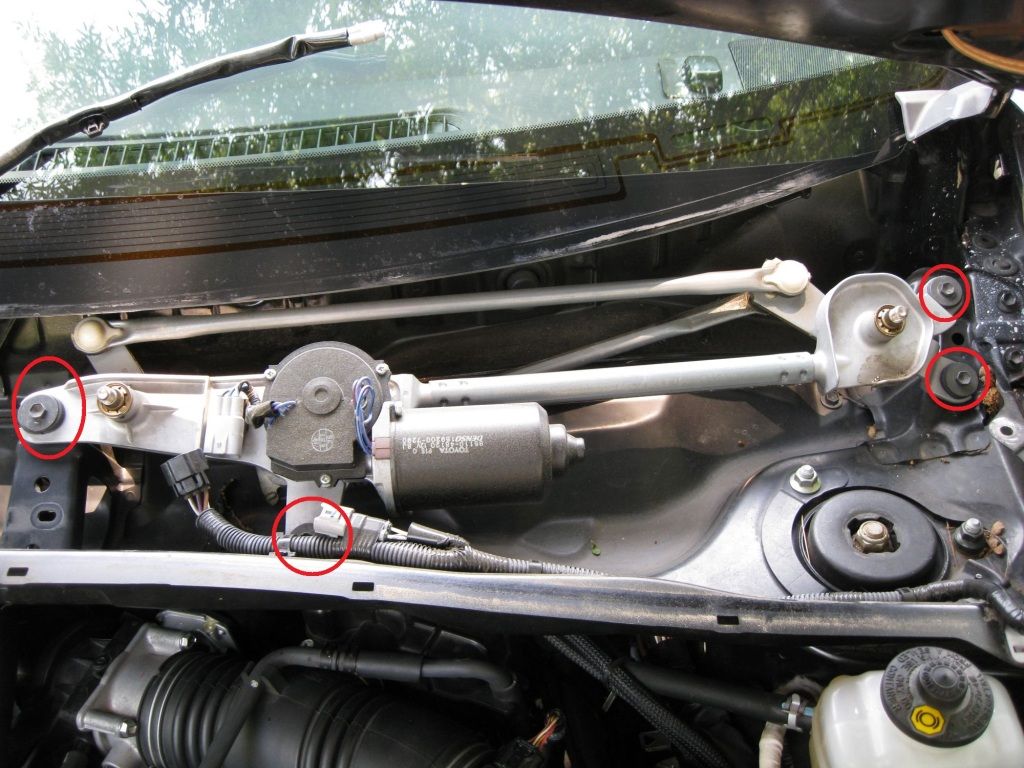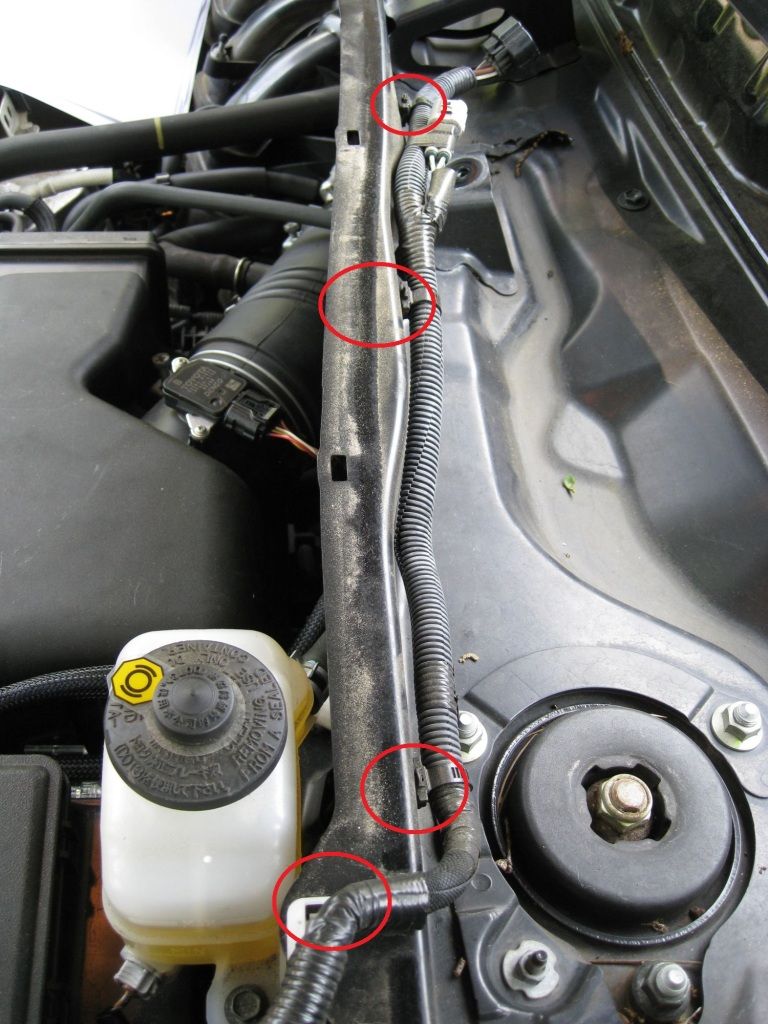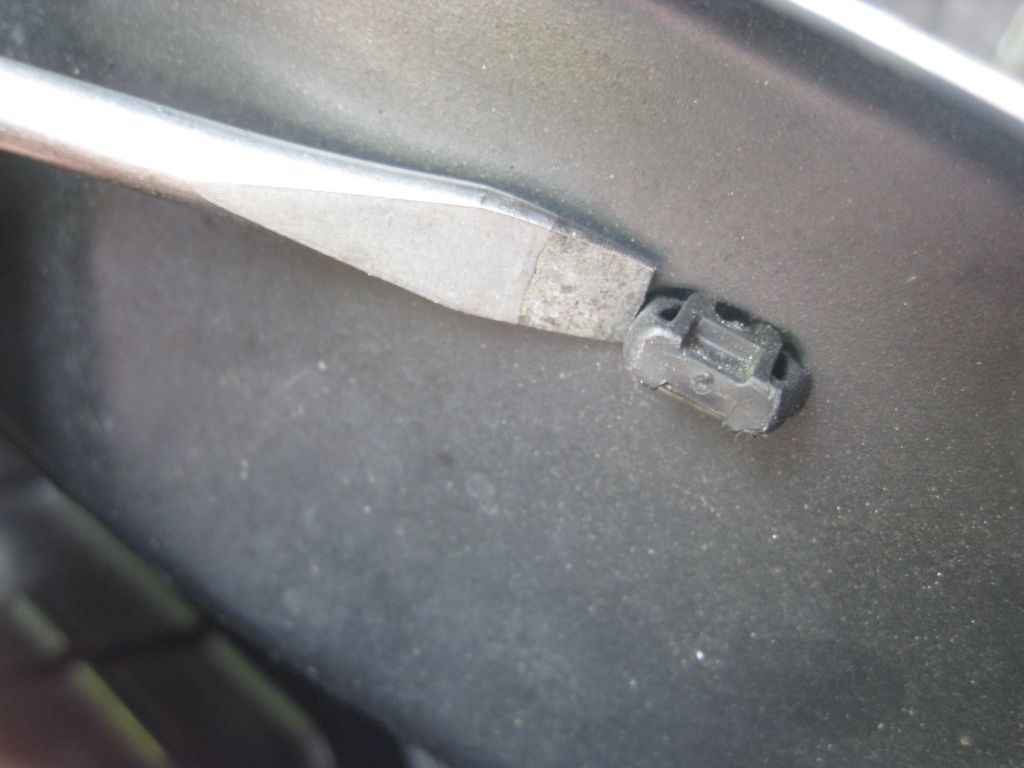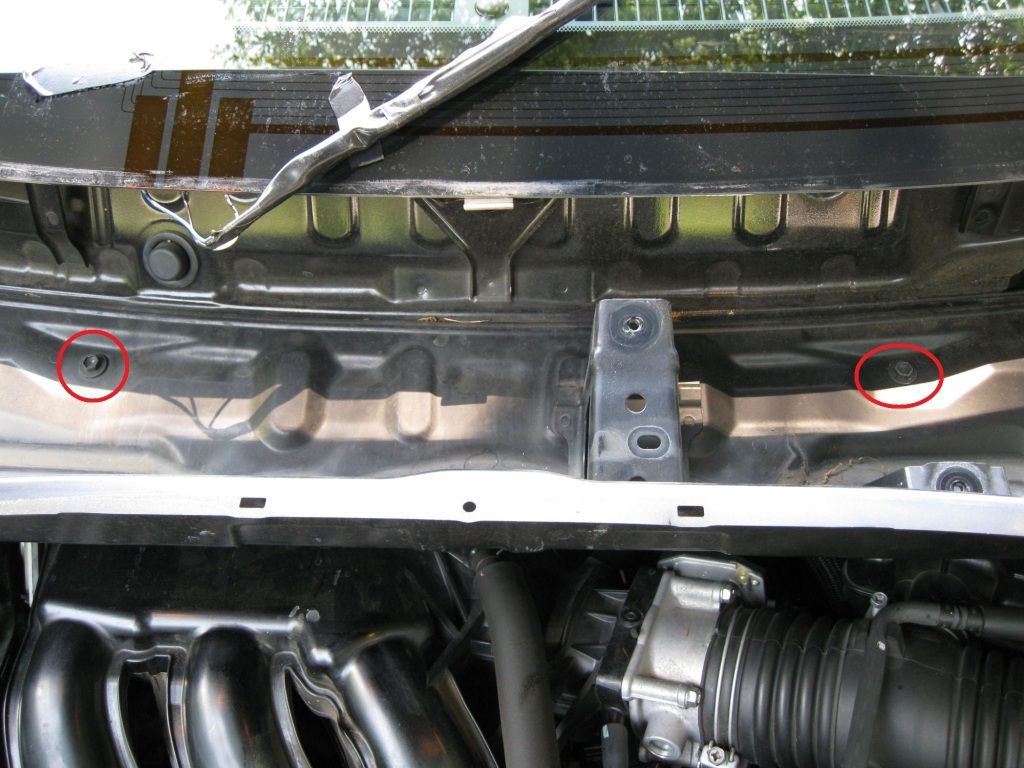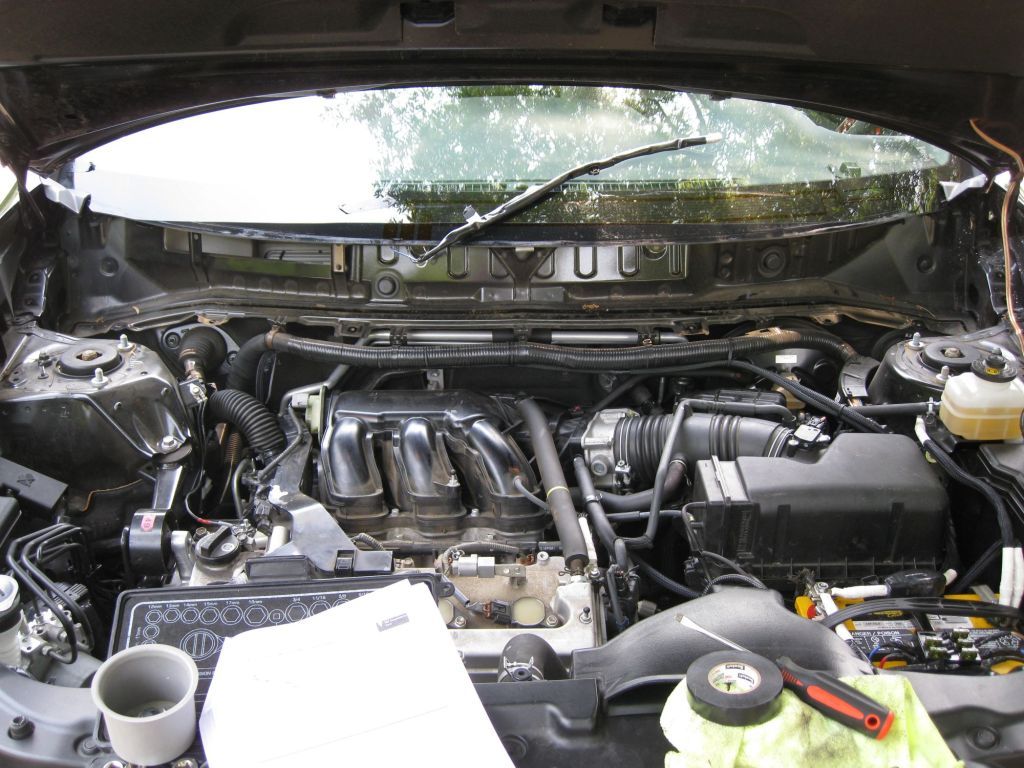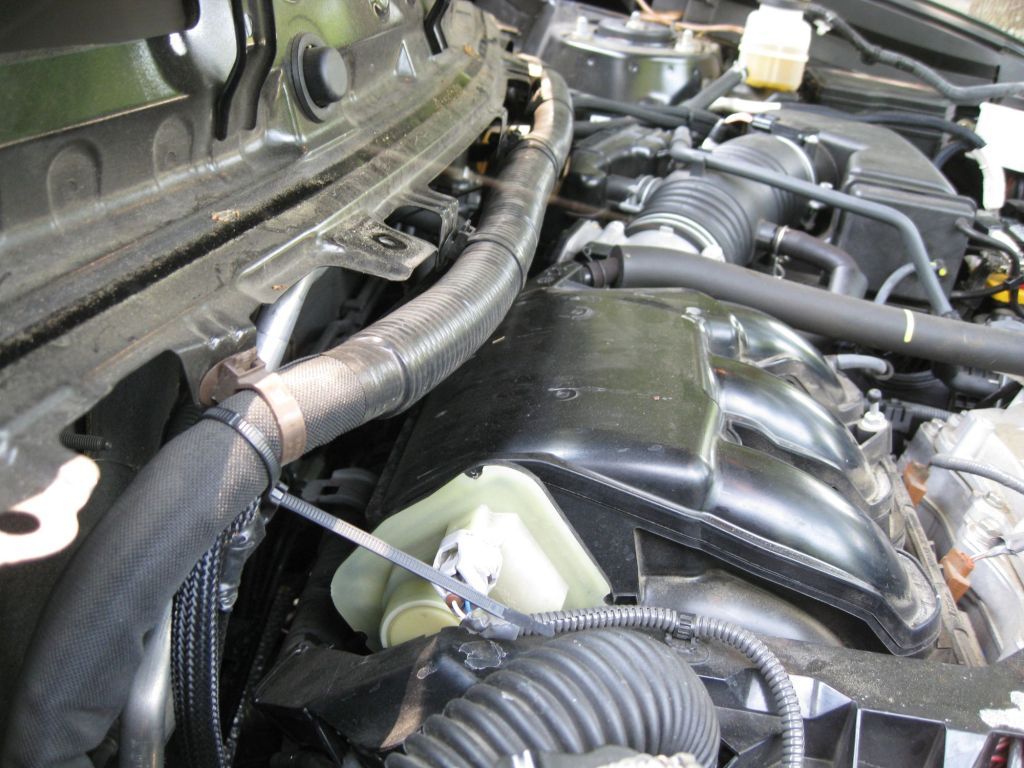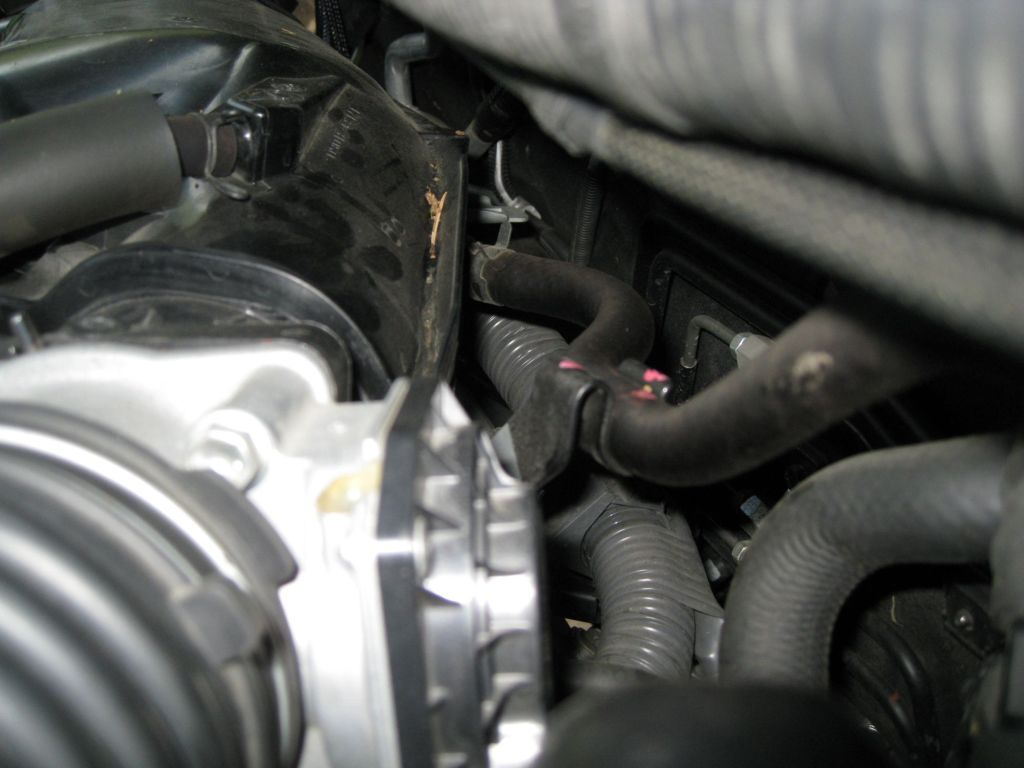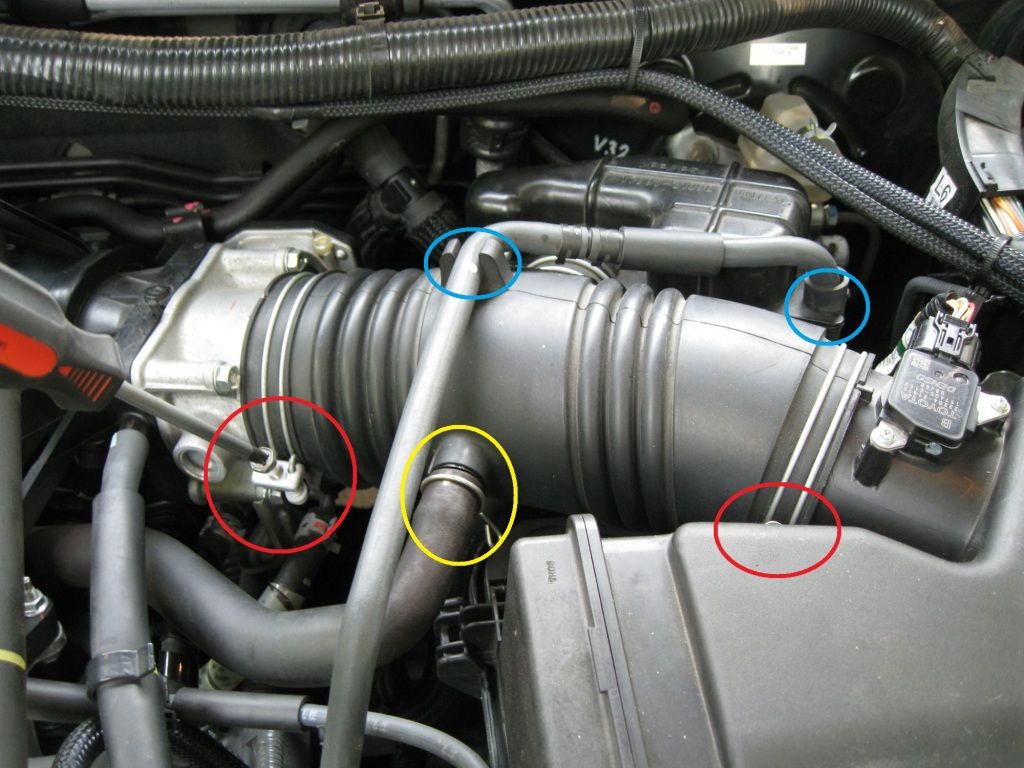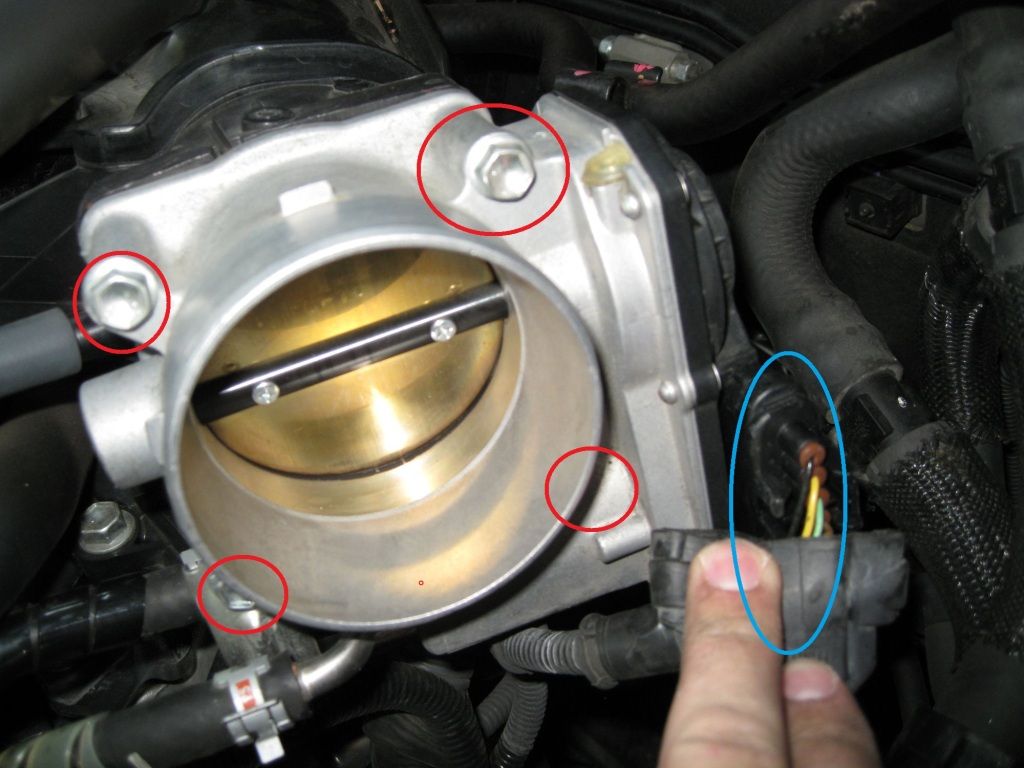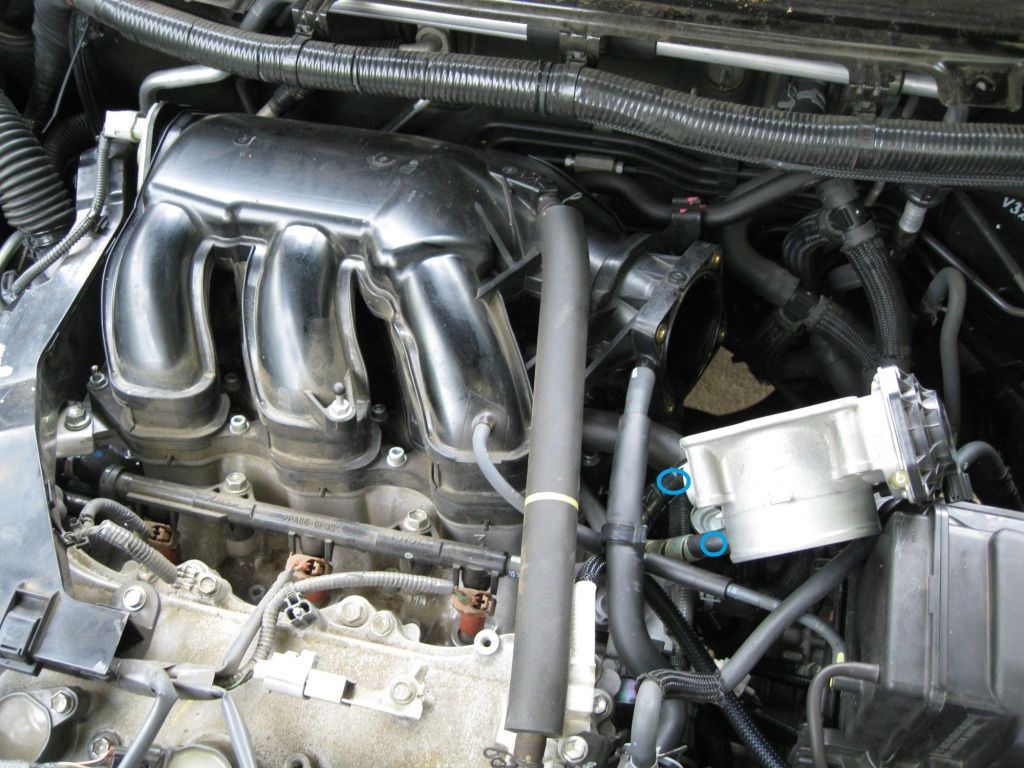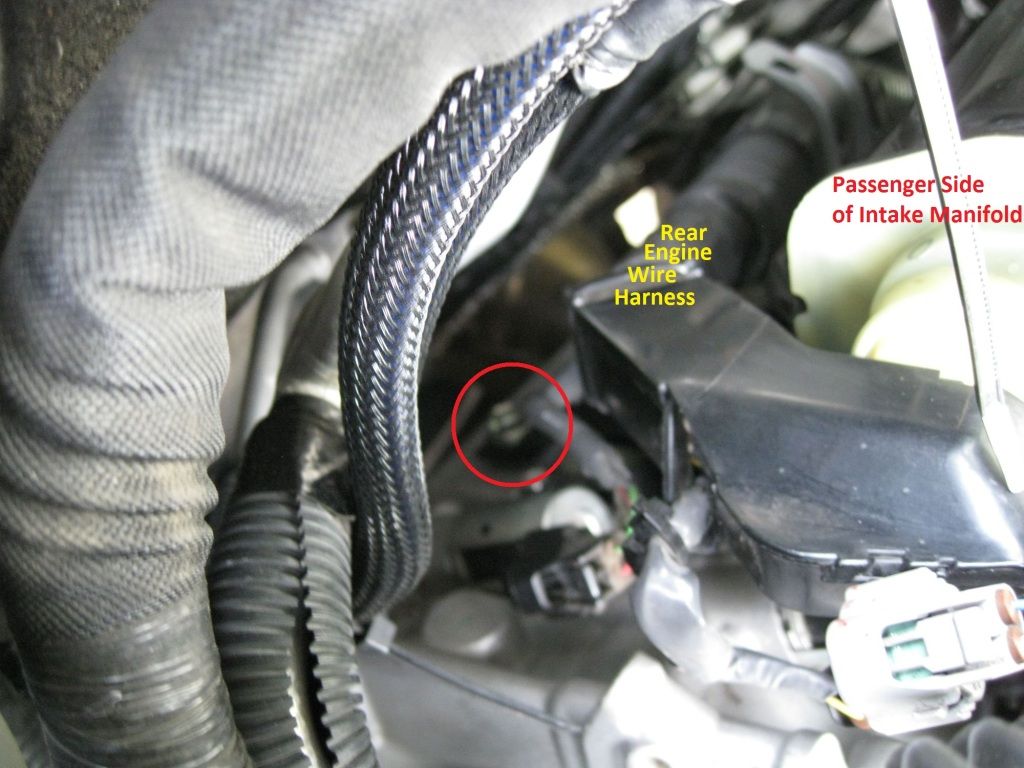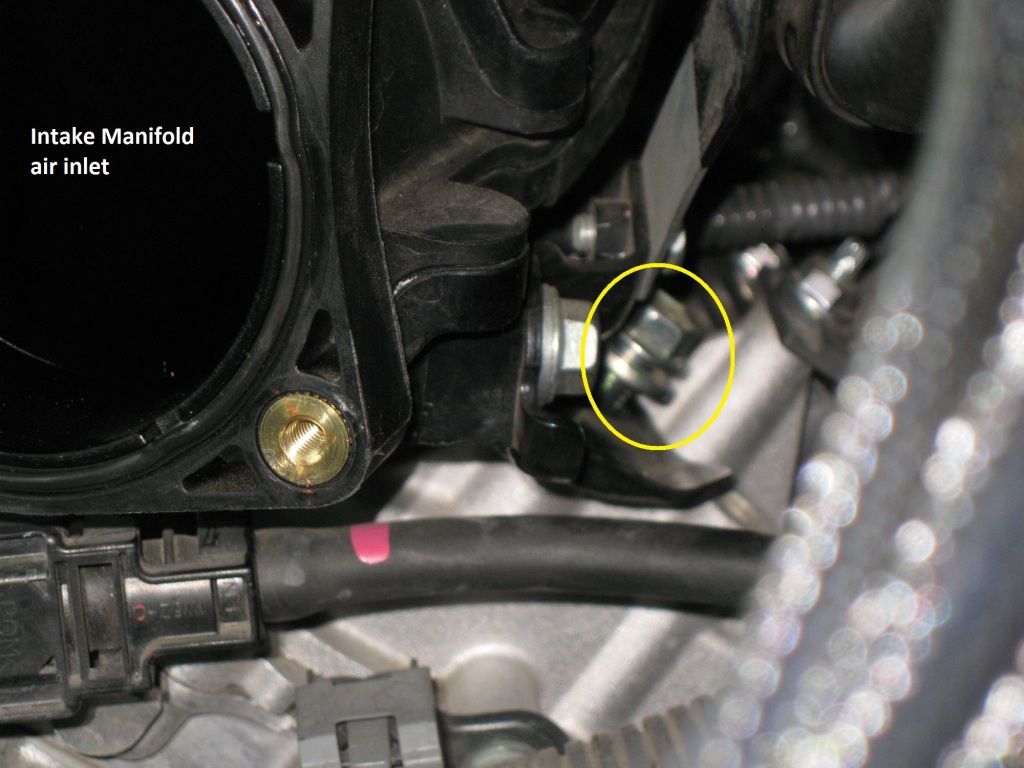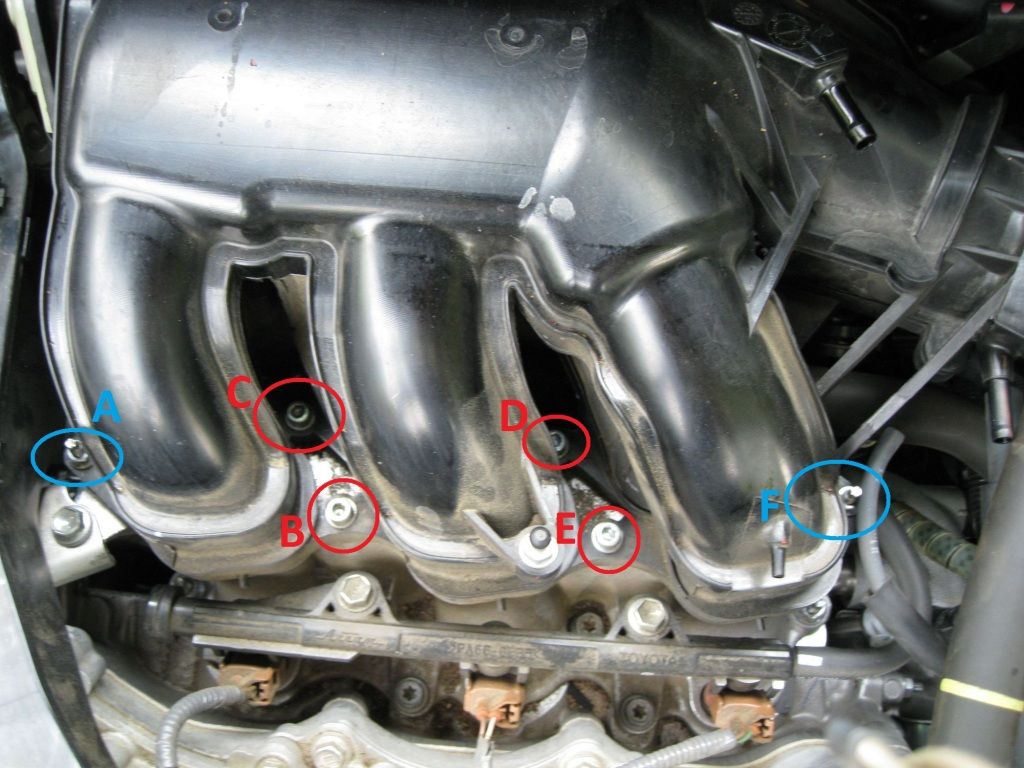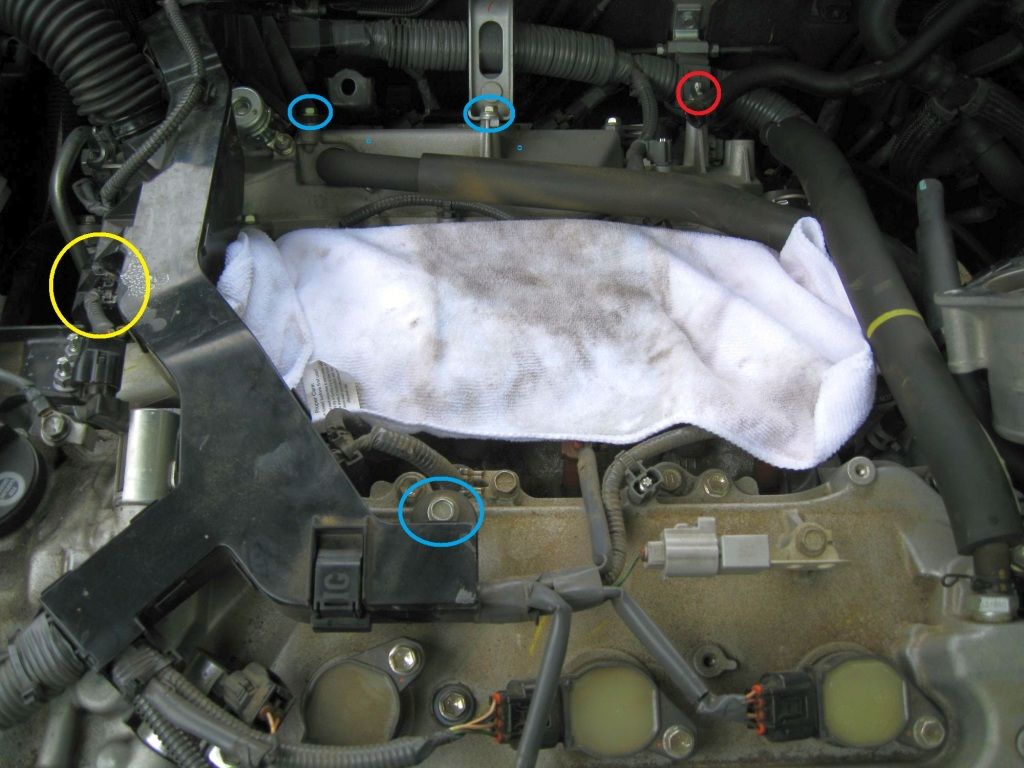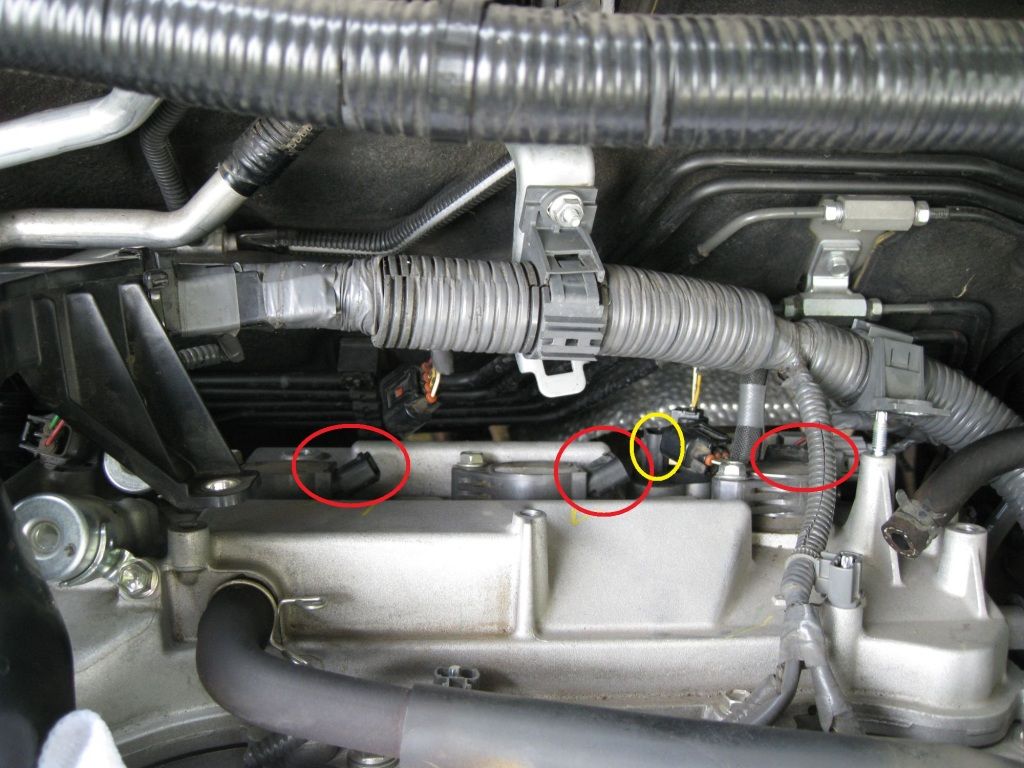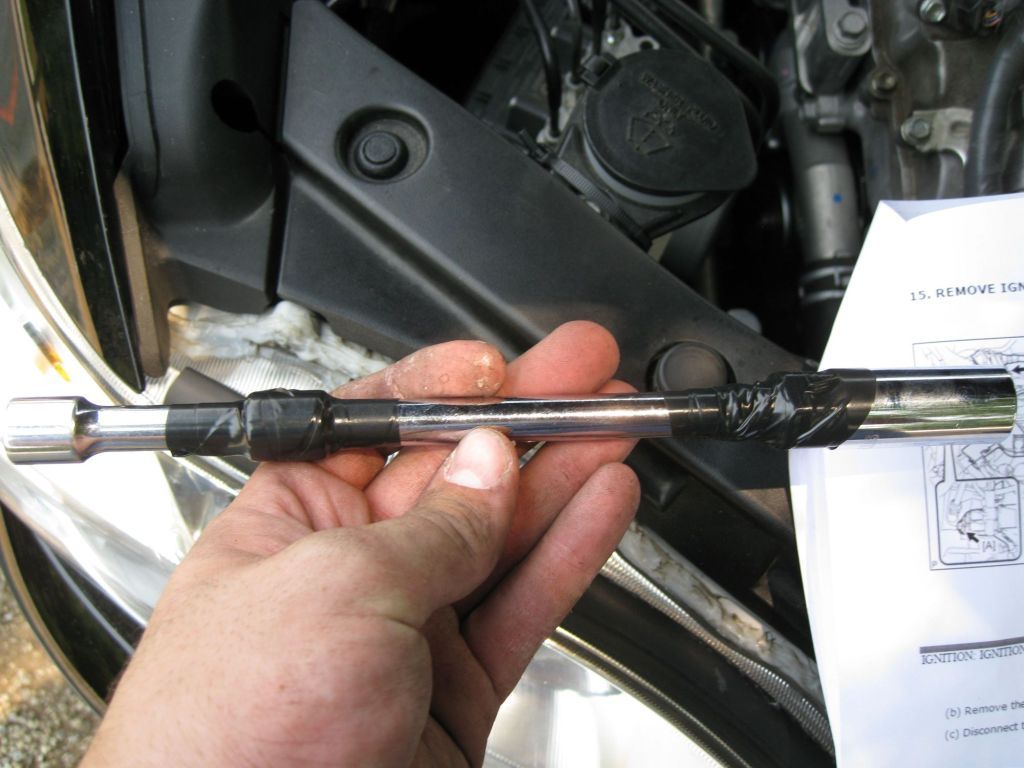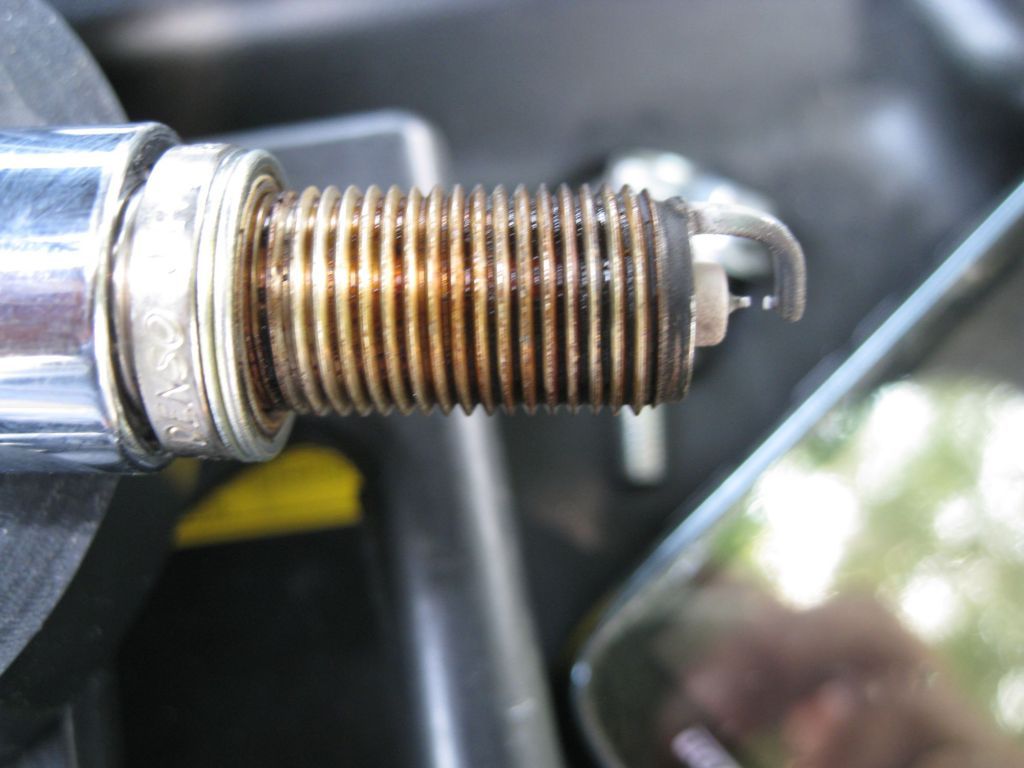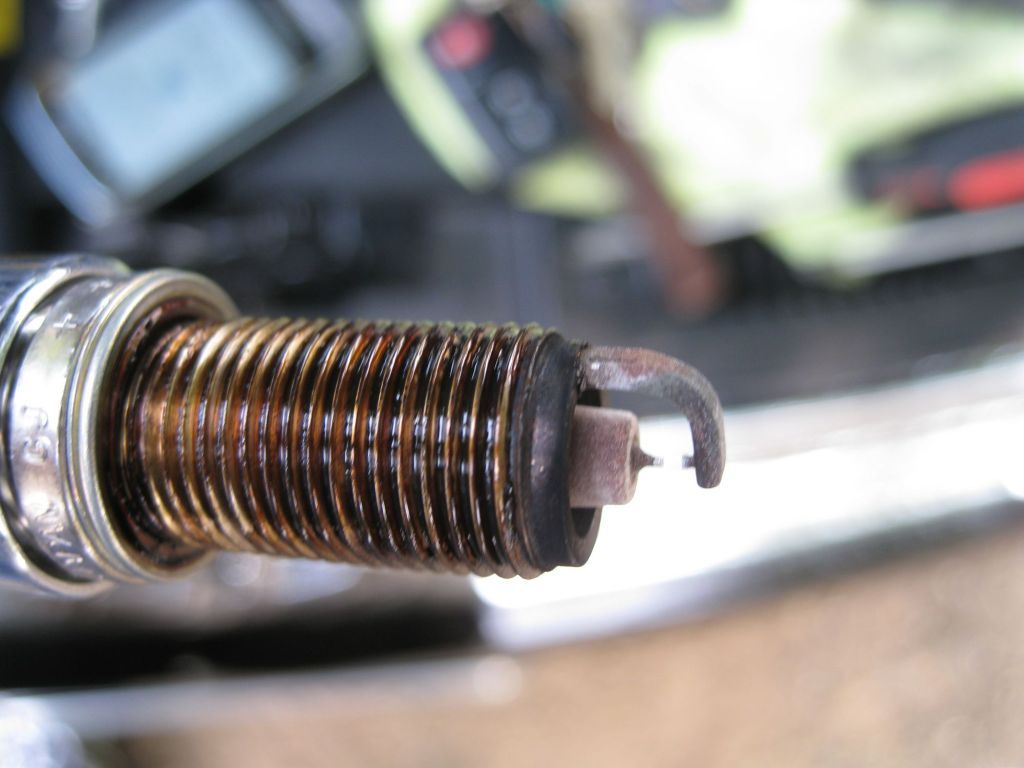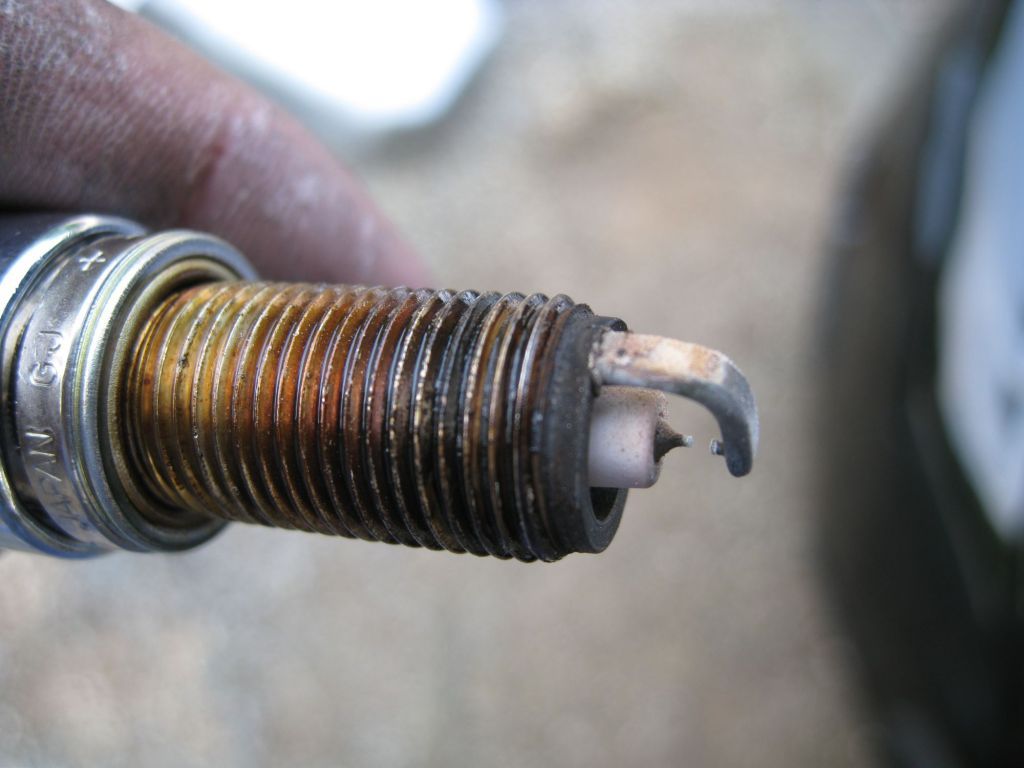Well I'm at 85k miles (obviously not the 120k recommended by Toyota), but I am replacing the the plugs anyway. Why? Because toyota.com (generic plug interval, not model specific) says no more than 110k miles, some Lexus models with iridium plugs go 60k mile intervals, online sources list iridium plug's life between 60-90k miles, etc etc. 120k miles just seems like a long time (especially after having vehicles in the past that change WAY more frequently). The stock OEM plug is a Denso FK20HR11, which is not your standard iridium plug. The center electrode is wider than most iridium plugs out there (.7mm IIRC) which allows it to be considered a "long life" plug. Still.....I'd rather not wait till I loose mpg/power due to old plugs to change them out. I'll replace them early so that I maintain the performance/mpg of the engine. Oh and please no rants/comments that its way to early to change, I know its earlier than maintenance schedule, its just the interval I'm comfortable with. :lol:
So here goes nothing
---------------------------------
I only replaced the front bank today (doing the dreaded rear bank tomorrow, I'll post that here then)
I am replacing the Denso FK20HR11's with NGK Iridium IX (Link - LFR6AIX-11) which were $7.50 from Advance Auto Parts. These aren't long life plugs (they are more on the performance side of iridium plugs), but they will last 60-90k miles.
Here is the front bank steps (the VERY easy side, only took ~20 min tops):
1) remove engine cover
2) Disconnect the coil pack's connectors (red circles) & unscrew the bolts (10mm - yellow circles) that hold them to the top of the valve cover
![Image]()
3) Clean area around the coil pack/spark plug opening of debris. The last thing you want is things falling into the opeining/cylinder while you have the plug out.
4)Just pull the coil pack straight out (will take a bit of force at first to get it off the plug, then it just slides right out)
![Image]()
![Image]()
5) Remove the old spark plug. They came right out. The plugs weren't stuck inside the cylinder, just a little more force than you could apply by hand was required to break the plug free. You will need a 5/8" spark plug socket with at least a 6" extension. Look below to give you an idea of how deep in the engine the plug is. That is a single 6" extension, I attached another 6" to the end of that to make life easier.
![Image]()
![Image]()
6) Check the old plugs for signs of unordinary wear...mine looked pretty good. I did notice the gap was too small on all of the OEM plugs. From what I have always understood, as plugs age, the gap usually gets larger due to material coming off the plug itself...well the OEM specs are that the plugs were to have a 1mm-1.1mm gap. The OEM plugs I removed had no larger than .9mm gap (one was .85'ish mm). So in theory the gap was even smaller when they were new????:facepalm: You would think the plugs would have been gaped correctly from the factory.....
Here is what mine looked like with 85k miles:
Driver Front Cylinder:
![Image]()
Center Front Cylinder:
![Image]()
Passenger Front Cylinder:
![Image]()
And just for the hell of it...out with the old, in with the new (old on left, new NGK on right).
![Image]()
7) Install the new plug. First make sure its gaped correctly (again between 1-1.1mm). The NGK box said don't gap it yourself as they are pre-gaped and you can break the center electrode off...just be careful. 2 of the plugs were at 1mm exactly, one was at 1.05mm from the plug factory. This part is not required for basic function (but its beyond highly recommended due to the life of these plugs), I put anti-seize lubricant on the threads of the new plugs to make life easy next time I change the plugs. OEM torque for the spark plug is 13 ftlb of force. Unfortunatly I don't have a torque wrench that will handle that low of a torque. Basic rule of thumb (and it is also what NGK suggests), is to fully hand tighten the new plug in (to make sure its properly seated and prevent cross threading), then use a socket wrench to turn/tighten the plug an additional 1/3-1/2 turn. That was enough to get it pretty snug without over tightening it. With a socket wrench it would be REALLY easy to overtorque it...watch out.
![Image]()
8) Reinstall the coil pack. It will take a bit of downard force to seat it back down on the plug, but you will know when its seated properly. Then reinstall the 10mm bolt that holds it to the valve cover and reconnect the ignition wires to it.
9) Turn the car on and listen/feel for unusual vibrations, misfires, dead cylinders to make sure the new plugs are all working. If one isn't firing you will definitly know (very rough idle, strong vibrations).
And that's the front bank...took about 25 min to complete. Just a quick note, I unhooked all the coil packs at the same time, BUT I only did all the steps above 1 at a time (remove coil pack, replace plug, re-install coil pack). That way I only had 1 opening in the engine for debris to fall into at a time.
If anyone has ever looked at the rear bank...yall know its a epic pain to get back there. There is very little room...
![Image]()
![Image]()
The OEM instructions on how to replace the plugs say to remove both the wiper motor/cowl structure and the intake manifold, but I've seen post on here before where poeple said they just removed the wiper/cowl and were able to get it to work. I'll take a crack at it tomorrow, but I'll probably end up taking both out (I'll show how to do it). You might be able to get your arm around the intake, but I'd rather take the extra time to remove everything and make more room, so I can be more careful and have more room installing the rear plugs.
so...until tommorrow :chug:
Tools/supplies list for front bank:
-10mm socket
-socket wrench
-5/8" spark plug socket
-anti-seize lubricant
-gaping tool
-minimum of 6" socket extension (I used 2x 6" extensions)
Disclaimer: Do at your own risk. I will not be held responsible for any damage to vehicle or bodily harm when performing these modifications, or any voidage of certain parts of your warranty.
So here goes nothing
---------------------------------
I only replaced the front bank today (doing the dreaded rear bank tomorrow, I'll post that here then)
I am replacing the Denso FK20HR11's with NGK Iridium IX (Link - LFR6AIX-11) which were $7.50 from Advance Auto Parts. These aren't long life plugs (they are more on the performance side of iridium plugs), but they will last 60-90k miles.
Here is the front bank steps (the VERY easy side, only took ~20 min tops):
1) remove engine cover
2) Disconnect the coil pack's connectors (red circles) & unscrew the bolts (10mm - yellow circles) that hold them to the top of the valve cover
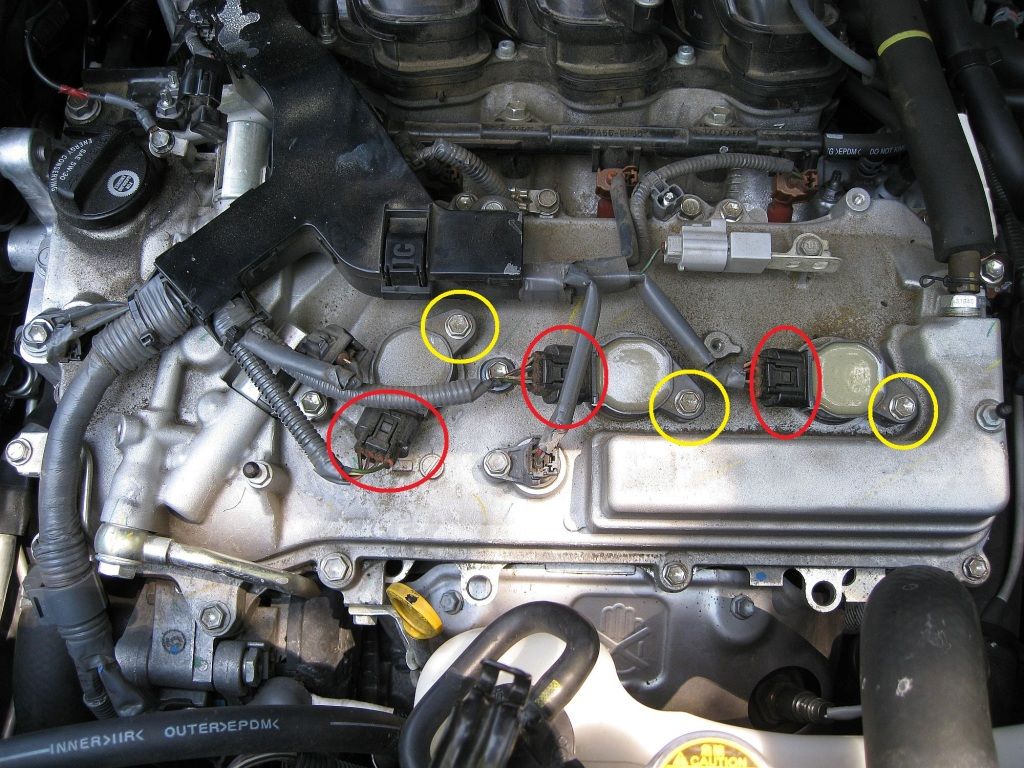
3) Clean area around the coil pack/spark plug opening of debris. The last thing you want is things falling into the opeining/cylinder while you have the plug out.
4)Just pull the coil pack straight out (will take a bit of force at first to get it off the plug, then it just slides right out)
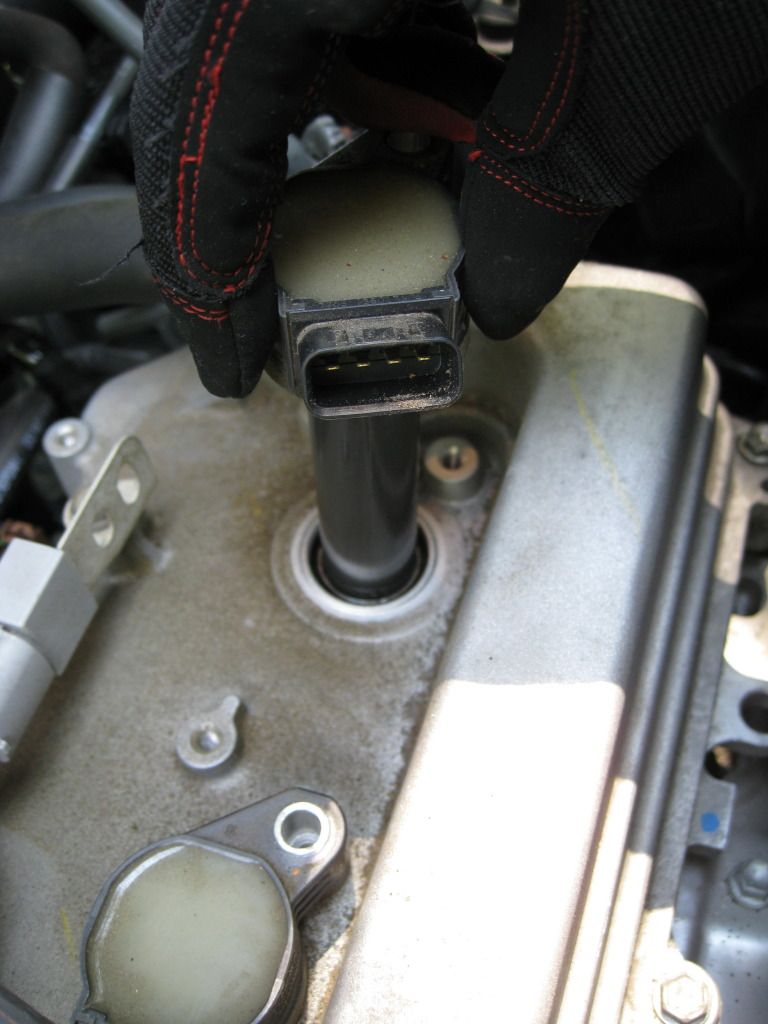

5) Remove the old spark plug. They came right out. The plugs weren't stuck inside the cylinder, just a little more force than you could apply by hand was required to break the plug free. You will need a 5/8" spark plug socket with at least a 6" extension. Look below to give you an idea of how deep in the engine the plug is. That is a single 6" extension, I attached another 6" to the end of that to make life easier.


6) Check the old plugs for signs of unordinary wear...mine looked pretty good. I did notice the gap was too small on all of the OEM plugs. From what I have always understood, as plugs age, the gap usually gets larger due to material coming off the plug itself...well the OEM specs are that the plugs were to have a 1mm-1.1mm gap. The OEM plugs I removed had no larger than .9mm gap (one was .85'ish mm). So in theory the gap was even smaller when they were new????:facepalm: You would think the plugs would have been gaped correctly from the factory.....
Here is what mine looked like with 85k miles:
Driver Front Cylinder:

Center Front Cylinder:

Passenger Front Cylinder:

And just for the hell of it...out with the old, in with the new (old on left, new NGK on right).
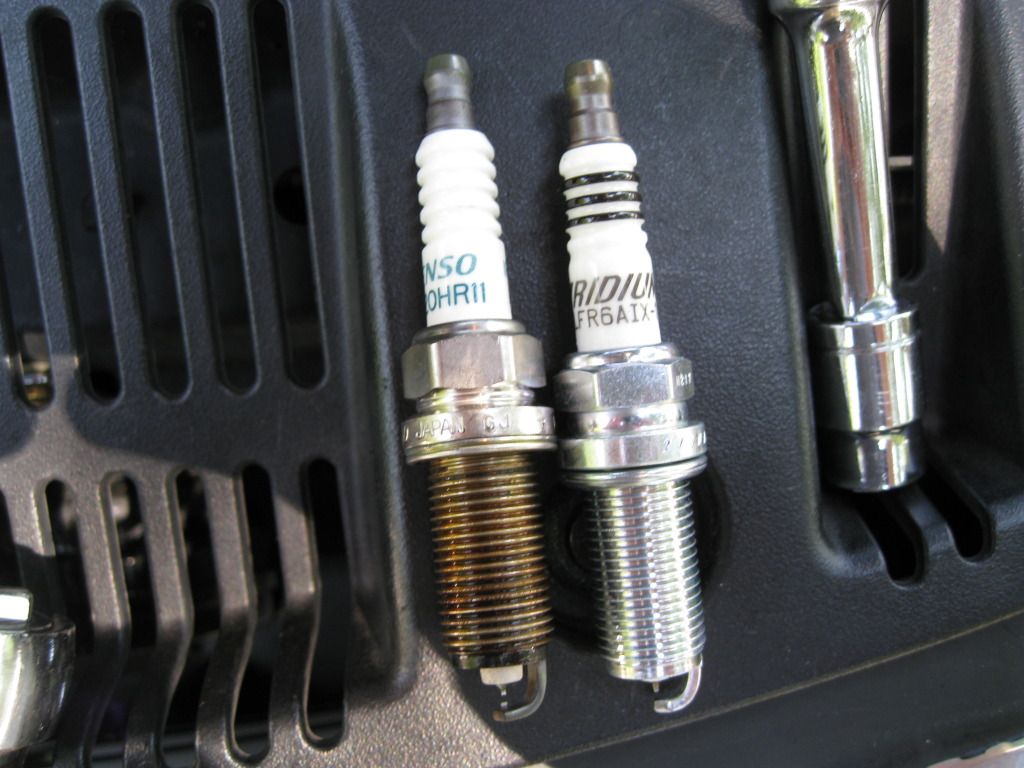
7) Install the new plug. First make sure its gaped correctly (again between 1-1.1mm). The NGK box said don't gap it yourself as they are pre-gaped and you can break the center electrode off...just be careful. 2 of the plugs were at 1mm exactly, one was at 1.05mm from the plug factory. This part is not required for basic function (but its beyond highly recommended due to the life of these plugs), I put anti-seize lubricant on the threads of the new plugs to make life easy next time I change the plugs. OEM torque for the spark plug is 13 ftlb of force. Unfortunatly I don't have a torque wrench that will handle that low of a torque. Basic rule of thumb (and it is also what NGK suggests), is to fully hand tighten the new plug in (to make sure its properly seated and prevent cross threading), then use a socket wrench to turn/tighten the plug an additional 1/3-1/2 turn. That was enough to get it pretty snug without over tightening it. With a socket wrench it would be REALLY easy to overtorque it...watch out.

8) Reinstall the coil pack. It will take a bit of downard force to seat it back down on the plug, but you will know when its seated properly. Then reinstall the 10mm bolt that holds it to the valve cover and reconnect the ignition wires to it.
9) Turn the car on and listen/feel for unusual vibrations, misfires, dead cylinders to make sure the new plugs are all working. If one isn't firing you will definitly know (very rough idle, strong vibrations).
And that's the front bank...took about 25 min to complete. Just a quick note, I unhooked all the coil packs at the same time, BUT I only did all the steps above 1 at a time (remove coil pack, replace plug, re-install coil pack). That way I only had 1 opening in the engine for debris to fall into at a time.
If anyone has ever looked at the rear bank...yall know its a epic pain to get back there. There is very little room...


The OEM instructions on how to replace the plugs say to remove both the wiper motor/cowl structure and the intake manifold, but I've seen post on here before where poeple said they just removed the wiper/cowl and were able to get it to work. I'll take a crack at it tomorrow, but I'll probably end up taking both out (I'll show how to do it). You might be able to get your arm around the intake, but I'd rather take the extra time to remove everything and make more room, so I can be more careful and have more room installing the rear plugs.
so...until tommorrow :chug:
Tools/supplies list for front bank:
-10mm socket
-socket wrench
-5/8" spark plug socket
-anti-seize lubricant
-gaping tool
-minimum of 6" socket extension (I used 2x 6" extensions)
Disclaimer: Do at your own risk. I will not be held responsible for any damage to vehicle or bodily harm when performing these modifications, or any voidage of certain parts of your warranty.


